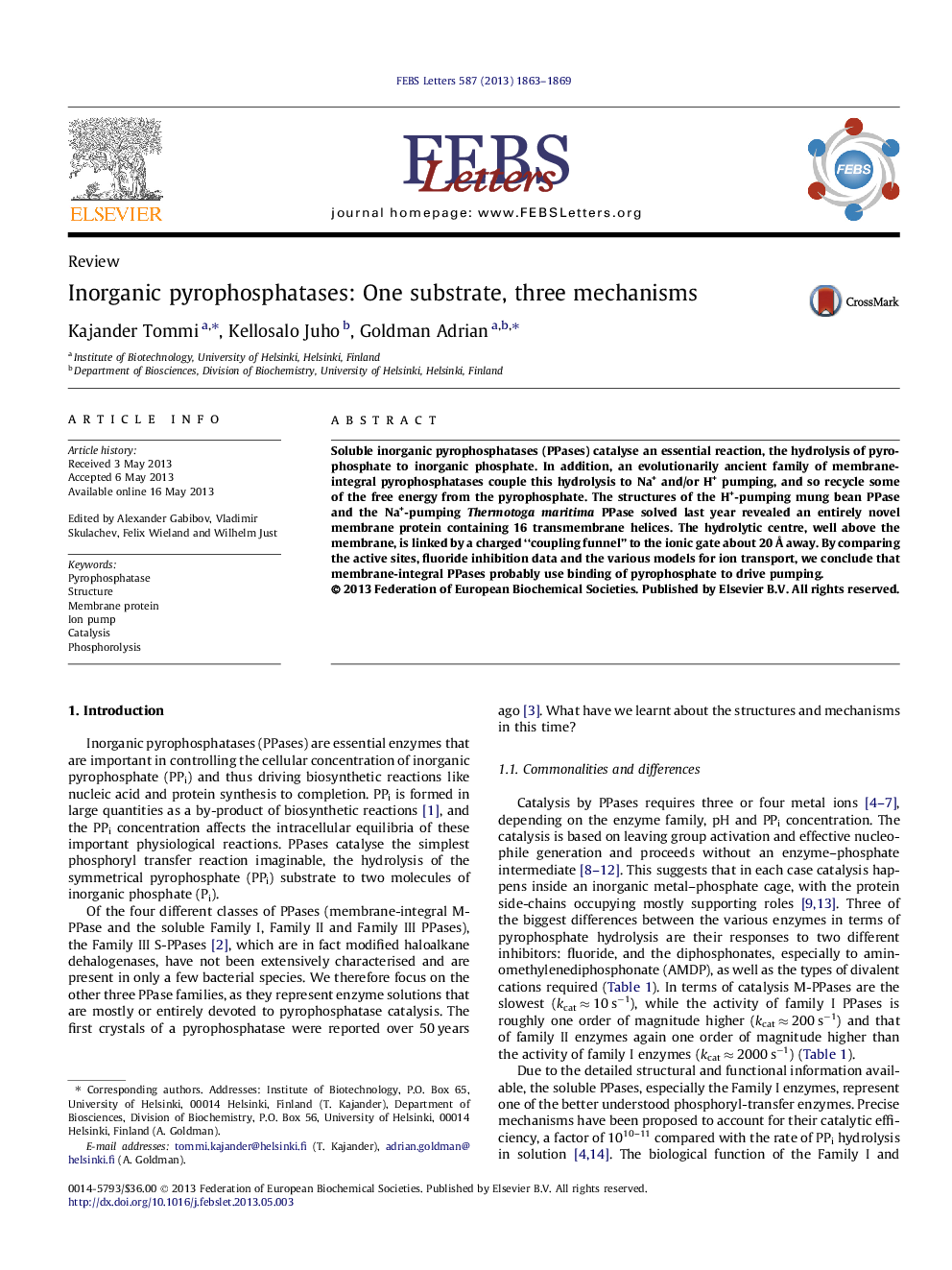| Article ID | Journal | Published Year | Pages | File Type |
|---|---|---|---|---|
| 10871332 | FEBS Letters | 2013 | 7 Pages |
Abstract
Soluble inorganic pyrophosphatases (PPases) catalyse an essential reaction, the hydrolysis of pyrophosphate to inorganic phosphate. In addition, an evolutionarily ancient family of membrane-integral pyrophosphatases couple this hydrolysis to Na+ and/or H+ pumping, and so recycle some of the free energy from the pyrophosphate. The structures of the H+-pumping mung bean PPase and the Na+-pumping Thermotoga maritima PPase solved last year revealed an entirely novel membrane protein containing 16 transmembrane helices. The hydrolytic centre, well above the membrane, is linked by a charged “coupling funnel” to the ionic gate about 20Â Ã
away. By comparing the active sites, fluoride inhibition data and the various models for ion transport, we conclude that membrane-integral PPases probably use binding of pyrophosphate to drive pumping.
Related Topics
Life Sciences
Agricultural and Biological Sciences
Plant Science
Authors
Kajander Tommi, Kellosalo Juho, Goldman Adrian,
